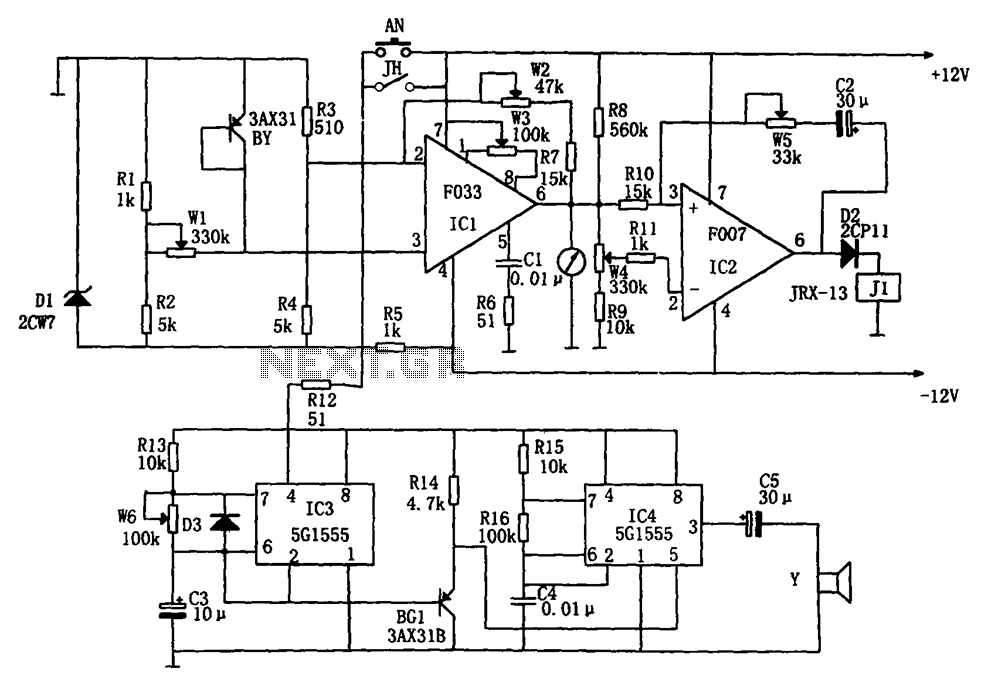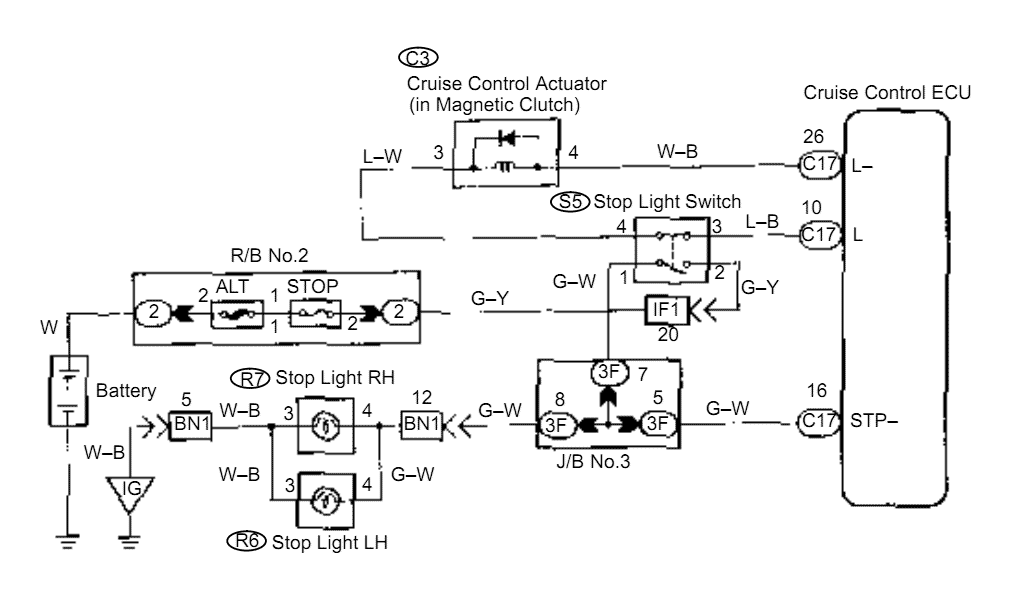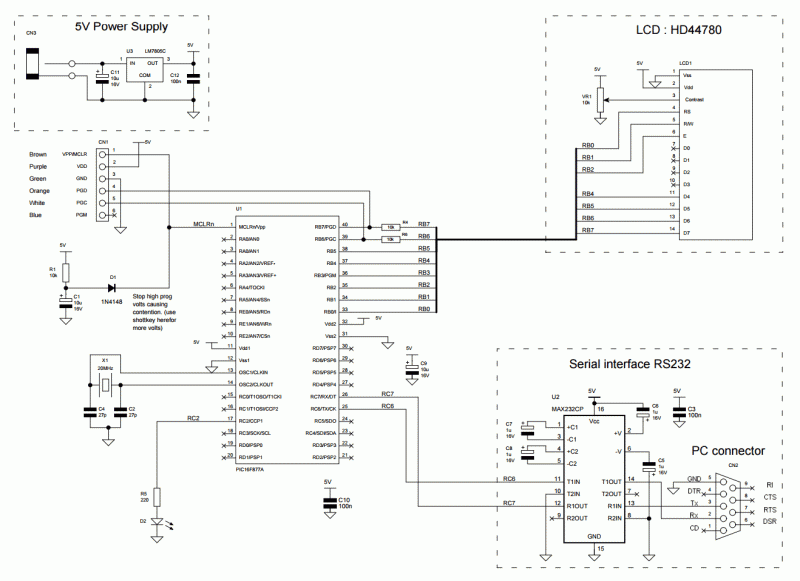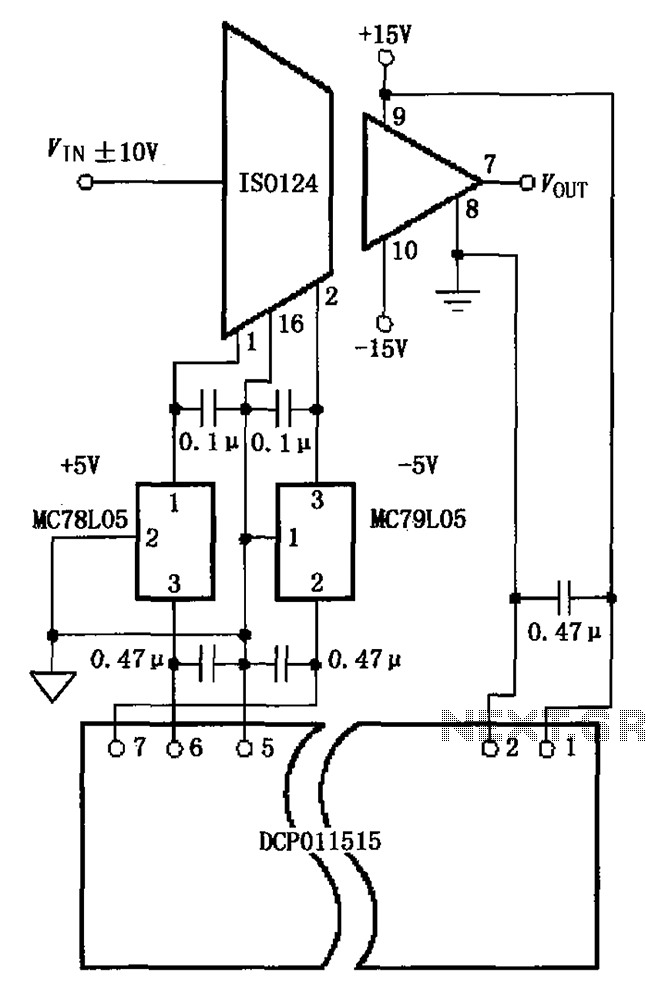
Treasury temperature measurement alarm circuit diagram F007 5G1555 F033

The temperature alarm circuit shown in the figure consists of an inverting amplifier (IC1), a comparison amplifier (IC2), a low-frequency multivibrator (IC3), a controllable oscillation frequency multivibrator (IC4), a bridge measurement network, a speaker (Y), and a power supply circuit. The bridge measurement network utilizes a temperature sensor (BY), which is a germanium tube (3AX31) in a PN junction configuration, along with resistors R1 to R4 and a potentiometer (W1). IC1 (F033) functions as an inverting amplifier with associated RC components, while IC2 (F007) is configured as a reference voltage comparator amplifier connected to its inverting terminal. IC3, along with its RC components, operates as a low-frequency oscillator at approximately 1Hz, which controls the oscillation frequency of IC4. The circuit includes an adjustable potentiometer (W1) to ensure the bridge is in equilibrium at 0, resulting in an output from IC1 close to 0V, which allows for zeroing the microammeter (CB). Potentiometer W2 adjusts the gain of the amplifier to scale the microammeter to approximately 0.1V/. Potentiometer W3 is used to balance the amplifier so that the microammeter (CB) indicates zero. Potentiometer W4 adjusts the reference comparison voltage of amplifier IC2, allowing for the determination of the alarm activation temperature based on seasonal and environmental conditions. The alarm circuit is controlled by the relay output of IC2, where a high voltage at the inverting terminal of IC2 results in a positive output voltage, turning on diode D2, energizing the relay coil, and closing contact J1-1 to activate the alarm.
The temperature alarm circuit is designed to monitor temperature variations and activate an alarm when a specified threshold is exceeded. The inverting amplifier (IC1) serves to amplify the signal from the temperature sensor, which is crucial for detecting minute changes in temperature. The configuration of IC2 as a reference voltage comparator allows for precise comparison against a set voltage, enabling the circuit to trigger an alarm when the temperature surpasses the predetermined level.
The low-frequency multivibrator (IC3) plays a critical role by generating a stable frequency that can be adjusted to suit the application's requirements. This frequency can influence the response time of the system, ensuring that the alarm is activated promptly in case of temperature fluctuations. The controllable oscillation frequency multivibrator (IC4) allows for additional customization of the output signal, which can be tailored to the specific needs of the application.
The bridge measurement network, utilizing the germanium tube sensor (BY) and associated resistors, creates a sensitive and responsive measurement system. The use of potentiometers (W1, W2, W3, and W4) provides flexibility in calibration and adjustment, allowing users to fine-tune the system for various operating conditions. This ensures that the microammeter provides accurate readings and that the alarm triggers at the correct temperature.
In summary, this temperature alarm circuit is a sophisticated and adjustable system that effectively monitors temperature and activates an alarm when necessary. Its design incorporates various components and configurations that enhance its functionality, making it suitable for a wide range of applications where temperature monitoring is critical. As shown in FIG measuring temperature alarm circuit to the Treasury. The device consists of inverting amplifier IC1, comparison amplifier IC2, low-frequency multivibrator IC3, IC4 multivibrator controllable oscillation frequency, bridge measuring network, a speaker Y, the power supply circuit. Wherein the bridge is measured by a temperature sensor network BY (germanium tube 3AX31) a PN junction, resistors R1 ~ R4 and potentiometer W1 and other components.
IC1 (F033) with some RC components inverting amplifier, IC2 (F007) reference voltage comparator amplifier configuration connected to the inverting terminal of IC2. IC3 and RC components around 1Hz low frequency oscillator, which in turn controls the corresponding oscillation frequency of the multivibrator IC4.Circuit adjustable potentiometer W1 so that the bridge at 0 in equilibrium, so that the corresponding output of IC1 is about 0V, then microampere meter CB zeroing.
W2 potentiometer for adjusting the gain of the amplifier, so microampere meter scale reaches approximately 0.1V/. W3 potentiometer used to adjust the balance of the amplifier, so microampere meter CB indication zero.
W4 potentiometer for adjusting the amplifier IC2 reference comparison voltage, depending on the season and room temperature requirements to determine how high the temperature was powered alarm circuits, so that an alarm sound. Additional power contacts J1-1 alarm circuit is controlled by the relay IC2 output. When the high voltage of IC2 inverting terminal foot than inverting terminal feet when, IC2 output is a positive voltage, the D2 is turned on, the relay coil due to current flow and the J1-1 contact sticking.
The temperature alarm circuit is designed to monitor temperature variations and activate an alarm when a specified threshold is exceeded. The inverting amplifier (IC1) serves to amplify the signal from the temperature sensor, which is crucial for detecting minute changes in temperature. The configuration of IC2 as a reference voltage comparator allows for precise comparison against a set voltage, enabling the circuit to trigger an alarm when the temperature surpasses the predetermined level.
The low-frequency multivibrator (IC3) plays a critical role by generating a stable frequency that can be adjusted to suit the application's requirements. This frequency can influence the response time of the system, ensuring that the alarm is activated promptly in case of temperature fluctuations. The controllable oscillation frequency multivibrator (IC4) allows for additional customization of the output signal, which can be tailored to the specific needs of the application.
The bridge measurement network, utilizing the germanium tube sensor (BY) and associated resistors, creates a sensitive and responsive measurement system. The use of potentiometers (W1, W2, W3, and W4) provides flexibility in calibration and adjustment, allowing users to fine-tune the system for various operating conditions. This ensures that the microammeter provides accurate readings and that the alarm triggers at the correct temperature.
In summary, this temperature alarm circuit is a sophisticated and adjustable system that effectively monitors temperature and activates an alarm when necessary. Its design incorporates various components and configurations that enhance its functionality, making it suitable for a wide range of applications where temperature monitoring is critical. As shown in FIG measuring temperature alarm circuit to the Treasury. The device consists of inverting amplifier IC1, comparison amplifier IC2, low-frequency multivibrator IC3, IC4 multivibrator controllable oscillation frequency, bridge measuring network, a speaker Y, the power supply circuit. Wherein the bridge is measured by a temperature sensor network BY (germanium tube 3AX31) a PN junction, resistors R1 ~ R4 and potentiometer W1 and other components.
IC1 (F033) with some RC components inverting amplifier, IC2 (F007) reference voltage comparator amplifier configuration connected to the inverting terminal of IC2. IC3 and RC components around 1Hz low frequency oscillator, which in turn controls the corresponding oscillation frequency of the multivibrator IC4.Circuit adjustable potentiometer W1 so that the bridge at 0 in equilibrium, so that the corresponding output of IC1 is about 0V, then microampere meter CB zeroing.
W2 potentiometer for adjusting the gain of the amplifier, so microampere meter scale reaches approximately 0.1V/. W3 potentiometer used to adjust the balance of the amplifier, so microampere meter CB indication zero.
W4 potentiometer for adjusting the amplifier IC2 reference comparison voltage, depending on the season and room temperature requirements to determine how high the temperature was powered alarm circuits, so that an alarm sound. Additional power contacts J1-1 alarm circuit is controlled by the relay IC2 output. When the high voltage of IC2 inverting terminal foot than inverting terminal feet when, IC2 output is a positive voltage, the D2 is turned on, the relay coil due to current flow and the J1-1 contact sticking.





